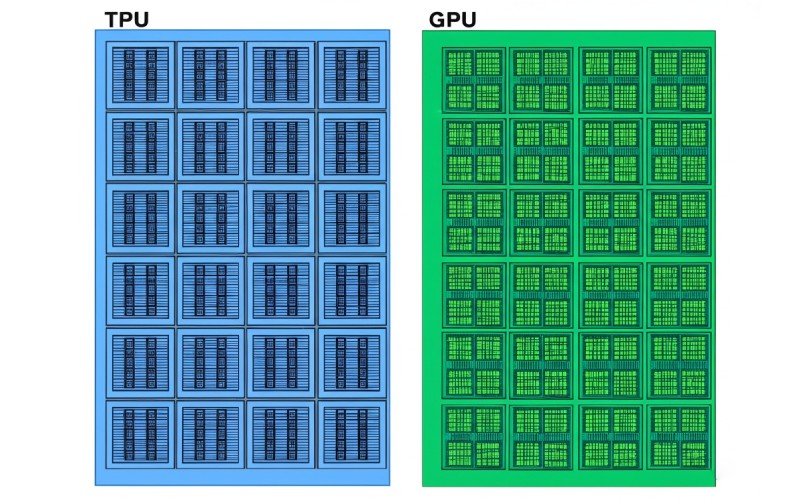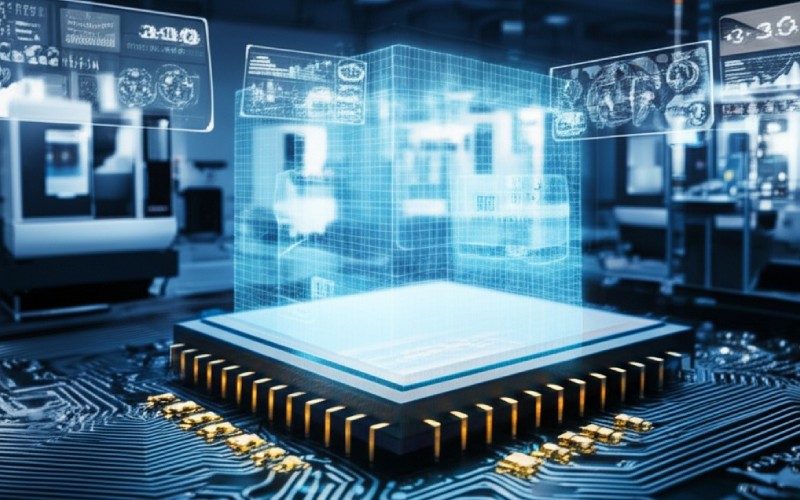Let Istar help you get started on your project with our experience and know-how!
Upload your design files and production requirements and we will get back to you within 30 minutes!

This one short name, TPU, stands for two very different technologies that are changing the world. This article is my way of explaining the difference so it’s easy to understand. Have you ever been curious about TPU? Maybe you want to make flexible parts with a 3D printer. Or maybe you want to speed up AI. If so, this post is for you. I’ll explain both things in a simple way, so you’ll know exactly which TPU you need for your work.
It is easy to see why people get confused. On one side, we have TPU for 3D printing. This is a real material that you can hold in your hand. It is a kind of plastic. You can think of it as a mix of rubber and plastic. When you hear people talking about making flexible phone cases or strong seals with a 3D printer, they are usually talking about this great TPU material. It is all about making real things with special features. I have seen this TPU used to create many things. For example, it can make a soft-touch grip on a power tool or a new design for a shoe sole.
On the other side of technology, we have the Tensor Processing Unit. This is also called a TPU. This TPU is not a material you can touch. It is a part of a computer, a special chip made by Google. You can think of it as a super-fast brain that is made to do just one job. That job is artificial intelligence and machine learning. When you hear engineers talk about training machine learning models or making computation faster, they are talking about this powerful TPU. This TPU is an application-specific integrated circuit. That is a fancy way of saying it is a chip built for a single job. Its purpose is to solve the huge math problems needed for things like natural language processing. It does this job very well. The confusion makes sense, but knowing the difference is important.
So, let’s look closely at the first TPU: Thermoplastic Polyurethane. This is my favorite flexible material to use with a 3D printer. Basically, TPU is a kind of flexible plastic string, called a filament. It is part of a bigger group of plastics called thermoplastic elastomers (TPEs). What makes TPU special is its unique mix of features. It has a rubber-like feel and can stretch really well. But it is also a thermoplastic. This means you can heat it up to melt it and give it a shape. For instance, in a 3D printer’s extruder. When it cools down, it will keep that shape.
The magic of TPU is because of how it is made. It is made of hard parts and soft parts. The hard parts give it its strength and durability. The soft parts give it that great flexibility and ability to stretch. This is why a TPU part can bend and stretch and not break. Then, it will go right back to its original shape. Different kinds of TPU filament have different levels of hardness. This is measured on a scale called Shore Hardness. This lets you pick the perfect amount of flex for your project. You can make anything from a soft toy to a tough, somewhat stiff part for a machine. The TPU can be used in many ways.
I get this question often. People ask why they should pick TPU instead of other materials. The simple answer is that TPU gives you a mix of good things you cannot find in other materials. The most important thing is its mix of strength and flexibility. A part printed in TPU can handle rough use. It has great impact resistance. This means it can be dropped or hit and it will not break into pieces. It also has fantastic abrasion resistance. So, it will not get worn down easily from rubbing. This makes it perfect for parts that need to move, bend, or take in shocks.
Another reason I often suggest TPU 3D printing is its chemical resistance. Many TPU filaments hold up well against oils, grease, and many common chemicals. This is a big plus in automotive and industrial applications. Also, TPUs offer great durability. Parts made from TPU last a long time, even when conditions are tough. It can be a little harder to 3D print than normal plastics. But the final parts are worth the effort. When you need a part that is strong, flexible, and will last a long time, TPU is almost always the best choice. The mechanical properties of TPU are just very good for these kinds of jobs.
This is the exciting part. Because of its special features, TPU can be used in so many great ways. I have personally used TPU for many different projects. In the area of consumer goods, you see TPU all over the place. Think about flexible phone cases and watch bands. Also, think about the soft-touch grips on razors or toothbrushes. These are great for applications like those that need a soft feel and great durability. 3D printing TPU lets people make custom designs and small numbers of these items. This makes it a very cost-effective choice.
In more technical areas, TPU is very useful. In the automotive world, it is used to make custom gaskets, seals, and flexible tubes. Its ability to resist chemicals and shaking makes it a great choice. I have also seen amazing uses in medical devices. TPU is not harmful and can be cleaned to be germ-free. Because of this, it is used for things like custom liners for artificial limbs and flexible guides for surgery. The ability to 3d print flexible parts with difficult geometry lets us do new things. For any project where you need parts that require a mix of softness, strength, and toughness, you should really think about using TPU.
Let’s change topics now and talk about the other TPU: the Tensor Processing Unit. This is a special computer chip. As I said before, it is an application-specific integrated circuit (ASIC). Picture a tool for many jobs, like an adjustable wrench. That is like a normal computer chip (a CPU). It can do many different jobs fairly well. Now, picture a special wrench made for just one kind of bolt. It fits just right and works very fast for that one job. That is a Tensor Processing Unit. Its one job is to do a certain kind of math. This math is called tensor computation, and it is used in machine learning.
Google made the Tensor Processing Unit to make machine learning tasks go faster. Modern AI, especially deep learning models, needs a huge number of calculations. A normal CPU would take a very long time to do this work. The Tensor Processing Unit is built from the start to do these specific tasks. This makes the whole process much faster and more efficient. This TPU is not something you buy for your computer at home. It is a powerful tool used in huge data centers. It helps run products or services like Google Search, Translate, and Photos. The TPU also uses a smaller amount of energy for this work than other chips.
To really get what makes a Tensor Processing Unit special, it helps to compare it to chips you already know. These are CPUs and GPUs. A CPU (Central Processing Unit) is the computer’s brain. It is made for general work. It is designed to handle all kinds of tasks one by one, like running your computer’s system or opening a website. It is flexible but not the fastest for doing the same simple task over and over at the same time. A GPU (Graphics Processing Unit) is made for a more specific job. It was first made to create the pictures for video games. This involves doing thousands of simple calculations all at once to make images. This power to do many things at once made GPUs a good choice for machine learning for a long time.
The Tensor Processing Unit is even more specialized. GPUs are good at doing many things at once. But a TPU is designed just for the matrix multiplication at the center of neural network computation. It has a huge number of simple calculators on one chip. It also has high bandwidth memory to give them data quickly. This means a TPU can handle large amounts of data. It can do these important calculations much faster and with less power than a strong GPU. This is why TPUs are used to train very big deep learning models. You can think about it like this. If a CPU is a single skilled worker, a GPU is a team of workers. A TPU is a whole factory line made for just one thing. CPUs and GPUs are great, but for large AI applications, the TPU is often a better suited choice.

The growth of the Tensor Processing Unit is connected to the fast growth of artificial intelligence. Today’s machine learning applications need two main things. They need large amounts of data and a lot of computer power to work with that data. The TPU gives them that power. Without special hardware like the TPU and strong GPUs, AI would not have grown so fast in the last ten years. Training difficult models would just take too long and cost too much money.
A Tensor Processing Unit makes it possible to build and use more advanced AI. For instance, it allows people to create language models that are more correct and complex. It also helps power computer vision systems. These systems can find objects in photos and videos with amazing speed. In short, the TPU is a very important tool for the whole AI field. It lets researchers and companies test ideas faster, build bigger and better models, and give the good things about AI to more people. This special hardware is a basic and important part of today’s AI systems. The TPU is a strong engine for computation.
To make things very clear, I have made a simple table. It shows the differences between the two kinds of TPU. Seeing them next to each other really shows how different they are.
| Feature | TPU (Thermoplastic Polyurethane) | TPU (Tensor Processing Unit) |
|---|---|---|
| What It Is | A flexible, rubber-like material (a filament for 3D printing) | A computer chip (an ASIC for AI computation) |
| Main Use | Making real objects with elasticity and durability | Speeding up machine learning models and AI jobs |
| Special Features | Hardness, abrasion resistance, chemical resistance, flexibility | Processing speed, power saving, parallel computation |
| Industry | Manufacturing, automotive, consumer goods, medical | Technology, AI research, cloud computing |
| Example | A flexible phone case, a drone part, a custom gasket | Powering Google Translate, training a model to find things in pictures |
As you can see, they have nothing in common but their name. One is about making things in the real world. The other is about working with information in the digital world. Both are very useful technologies, but for totally different purposes.

When I am working on something that needs to be flexible, TPU is the material I usually pick. But it is helpful to know about other choices. The main group of materials similar to TPU are other TPEs (Thermoplastic Elastomers). TPU is actually a type of TPE. Other TPE filaments might be a little softer or stretch more. But they can be even harder to 3D print. Another choice is TPC (Thermoplastic Copolyester). It offers good flexibility and is better at handling heat and sunlight than many TPU filaments.
For a comparison, let’s look at a common hard plastic like PLA or a strong one like Nylon. PLA is very easy to print but it breaks easily. Nylon is very strong and has great durability, but it is hard, not flexible. So, when you need that rubbery bounce and bend, none of these can take the place of TPU. Choosing the right material to 3d print always depends on what your part needs to do. The material properties of TPU, especially its excellent abrasion resistance and excellent tensile strength, make it a great choice for flexible 3d parts.
To finish, let’s answer a few frequently asked questions I hear about both kinds of TPU.
Is TPU 3D printing difficult? It can be more challenging to 3d print than hard materials. Because TPU filament is so flexible, it can sometimes bend or get stuck in the 3D printer’s extruder. But, with the right settings, you can get great results. For example, using a slower print speed and the right amount of pull is important. Changing things like wall thickness and retraction is important for a good surface finish and to keep its structural integrity.
What kind of TPU should I use for my 3D printer? TPU filaments come in different Shore Hardness ratings. A lower number (like 85A) is very soft and flexible. A higher number (like 95A) is stiffer and easier to print. For most general-use flexible TPU parts, a 95A TPU is a good place to start. Some are polyester-based, which can change their features.
Can I buy a Tensor Processing Unit (TPU)? Usually, no. A Tensor Processing Unit is not like a CPU or GPU that you can buy and put in your own computer. They are mostly used by Google in their own data centers. But, you can get the power of TPUs through Google Cloud Platform services. This lets anyone pay to use these powerful machines to train their own machine learning models.
Is a Tensor Processing Unit better than a GPU for all AI tasks? Not always. A TPU is made to be very good at the training part for deep learning models. But GPUs are still very useful and strong. For some kinds of machine learning applications or for the “inference” part (processing data at or near the user), a GPU might be a better or cheaper choice. The world of CPUs and GPUs and TPUs is always changing.